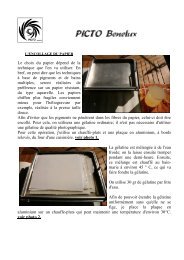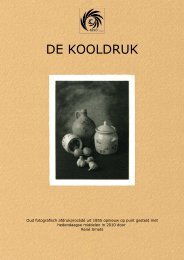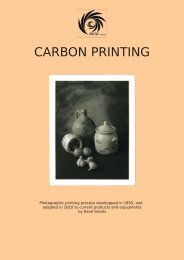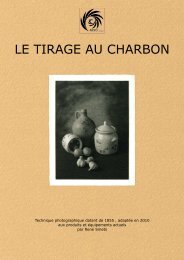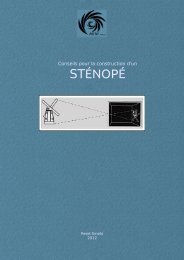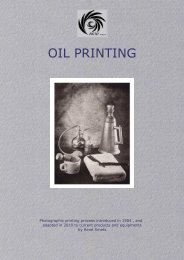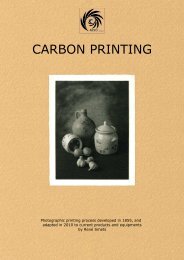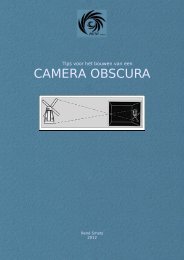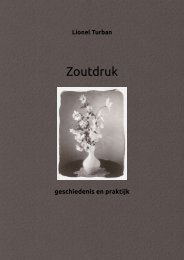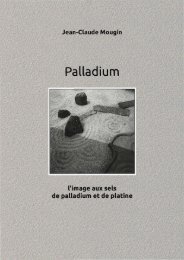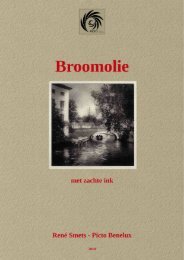Jean-Claude Mougin (pdf) - Picto Benelux
Jean-Claude Mougin (pdf) - Picto Benelux
Jean-Claude Mougin (pdf) - Picto Benelux
Create successful ePaper yourself
Turn your PDF publications into a flip-book with our unique Google optimized e-Paper software.
Baths to be used at temperatures between 15°C and 20°C<br />
ammonium citrate ............................. 500 gr<br />
water, at 50°C or more ............................. 1500 cc<br />
maintain pH at ............................. 5.5 / 6<br />
sodium citrate ............................. 500 gr<br />
water, at 50°C or more ............................. 1500 cc<br />
maintain pH at ............................. 5.5 / 6<br />
Homebrewers: see chapter III Recipes, §3, 4 and 5<br />
The literature insists on the fact that the developer is considered inexhaustible<br />
and can be used infinitely; it is even said that he would improve in time provided<br />
the pH is maintained at 5.5.<br />
11.3. My personal method ✌<br />
My experience contradicts these facts. Indeed the developer gets loaded with<br />
particles of palladium, but also of ferrous oxalate which in strong concentration<br />
eventually veils the print in an indelible way. It therefore is preferable to use oneshot<br />
baths, which certainly is more expensive, but has the merit to give quality<br />
results. The inconvenience of the price is reduced when you homebrew your<br />
developers. Homebrewers: see chapter III Recipes, §4, 5 and 6<br />
Processing procedure<br />
• use trays with a flat bottom, slightly larger than the print to be processed<br />
• prepare 50 cc of developer for a print up to 8"X10". Check the pH, if<br />
necessary; it should be kept between 5 and 6.<br />
• when working at high temperature, add the oxidizer necessary for contrast<br />
at the last moment, and agitate well to homogenize the solution<br />
• place the print on the bottom of the tray<br />
• pour rapidly the developer on the print, agitate regularly for 1 min. Timing<br />
is not critical, and doesn't cause any increase of contrast<br />
• clarify<br />
11.4. Temperature & contrast<br />
Palladium prints usually are processed at room temperature. Platinum<br />
prints require high temperatures, between 50°C and 100°C, otherwise they will be<br />
grainy.<br />
31



